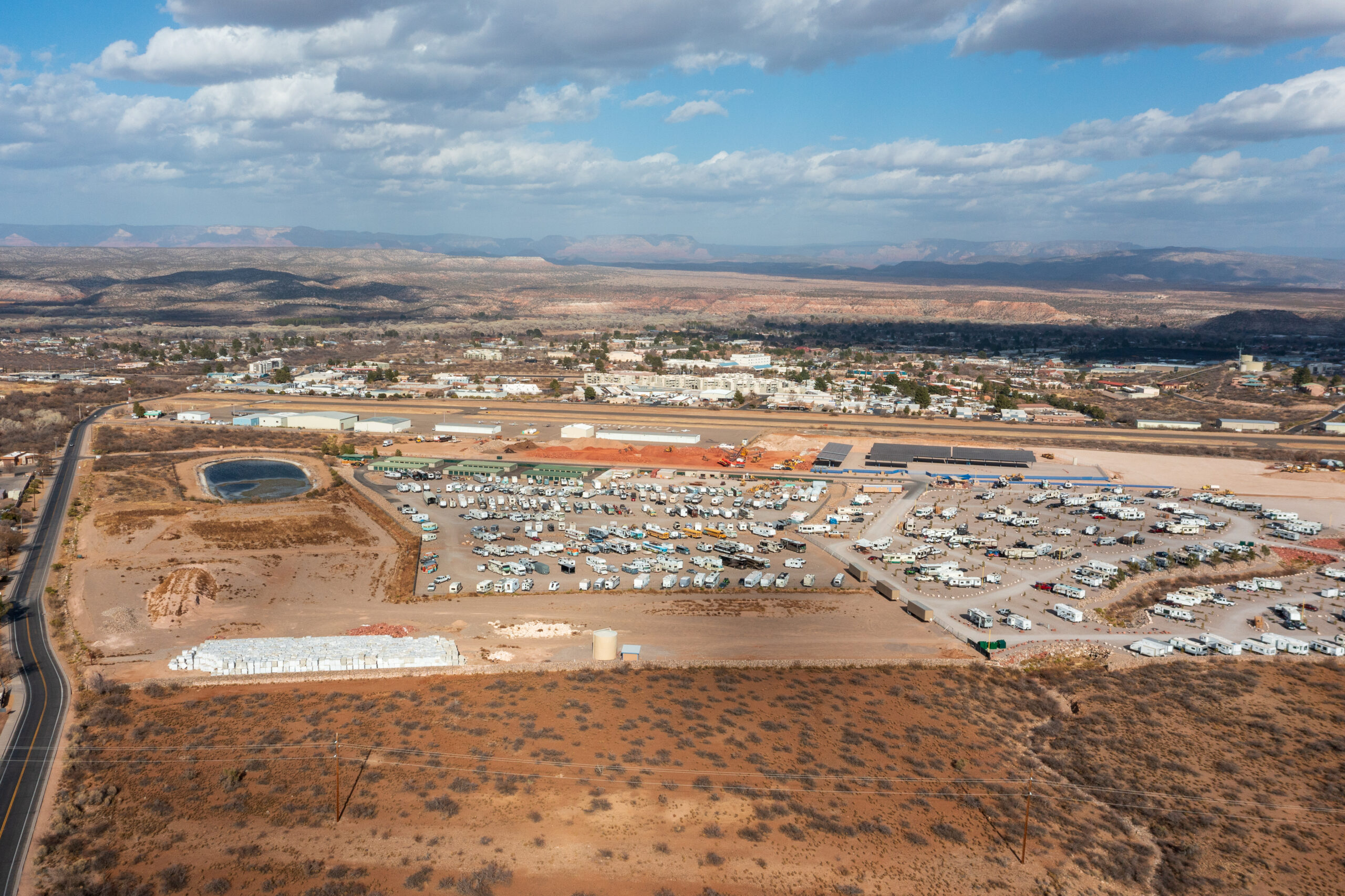Arizona Gov. Katie Hobbs issued a declaration of emergency in response to the March flooding across Yavapai County on April 13.
Hobbs’ office stated that the delay in issuing the declaration was due to waiting for local government bodies to request assistance.
“Camp Verde and other nearby communities will get some much-needed relief after getting hit with extreme weather last month,” Hobbs’ office said in a press release. “The declaration of emergency will allow this area to repair critical infrastructure damaged by flooding.”
Because the emergency declaration covers damage that occurred between March 15 and March 23, there will be no gap in funding for Yavapai County. Arizona Division of Emergency Management public assistance branch manager Duke Jones said that the value of the damages is likely to be below the level required for a federal emergency declaration.
“One of the problems with the event was difficulty by locals to really determine when the event started and ended,” Jones said. “The declaration process itself in order to get the information validated can sometimes take a little longer.”
Camp Verde risk management director Heather Vinson described the March flooding as the third most extensive flooding incident that the town has experienced, which was made more challenging by the way a week-long flood was immediately followed by nearly another week of additional flooding.
“Both of those instances of the flooding are considered one event, which is important for the declaration and for the people who are dealing with the damages,” Vinson said.
Arizona Division of Emergency Management
The declaration of emergency allocates $200,000 from the state’s general fund to the Arizona Division of Emergency Management, which coordinates Arizona’s emergency preparedness, response and recovery efforts, and authorizes the division to coordinate state assets in assisting cleanup efforts within Yavapai County. However, use of this public assistance funding is restricted to public infrastructure repairs; none of the funding will go to individuals or businesses.
$200,000 is the largest amount that the governor can obligate for a single disaster. If Emergency Management Division staff conclude that there is additional need, they can request additional funding, which must be approved by the State Emergency Council.
“The governor can turn on the faucet for the $200,000, but in order to keep that water flowing, the State Emergency Council has to authorize those expenditures and then eventually turn off the faucet,” Jones said.
Yavapai County
Yavapai County infrastructure experienced little damage and the county is not seeking reimbursement for any damage that did occur, according to Yavapai County Emergency Manager Ashley Ahlquist. However, the Yavapai County Sheriff’s Office will be seeking reimbursement for overtime costs associated with responding to emergency incidents during the March floods; the amount of overtime reimbursement the department will be seeking has not yet been determined.
Camp Verde
More than a mile of Verde Lakes Drive was damaged during the flooding. The town’s preliminary assessment of the cost of repairs is between $160,000 and $180,000. Vinson said that figure does not include mitigation costs for improving its resilience to future flooding, such as the construction of retention walls, which Camp Verde would like to undertake.
“We know that to do the mitigation, to do the rebuild, will probably supersede the amount of funding that’s available for the emergency portion,” Vinson said, adding that the town will decide later in the week what it plans to request.
“We didn’t have any property damage to any town buildings,” Vinson said. “There was some damage to homes. What we’ve been doing is referring those residents to the Yavapai County Office of Emergency Management. They have some other resources; because it’s declared an emergency they are able to go through the state and [now] apply for some funding.”
Copper Canyon Fire and Medical District Fire Marshal Nate Bailey said that the fire district as well as the Camp Verde Marshal’s Office will be seeking reimbursement for overtime resulting from conducting rescues. Bailey said that process is ongoing between local agencies and Yavapai County with a final amount to be determined.
Sedona
City of Sedona Communications Manager Lauren Browne stated that the city has not been made aware of any flood damage to municipal or private properties and that “most of the properties in Sedona that could have had damage are in Coconino County.”
The state’s emergency declaration applies only to Yavapai County. Emergency Management for Coconino County did not report flood damage to the internal structures of any residential housing, and the extent of flood damage was limited to roadways, county Assistant Director of Emergency Management Tim Carter stated.
Chino Valley
Chino Valley Public Works Director Frank Marbury estimated the cost of repairing flood damage in Chino Valley at between $100,000 and $250,000. The area that saw the most damage was a 2,000-foot stretch of Perkinsville Road that crosses Granite Creek on the east side of the town.
A county subdivision has been built on the opposite bank of the creek and the road is the only way in and out of the area.
Damage to the road was exacerbated when Prescott released excess water from Willow and Watson Lakes into Granite Creek to prevent the dams impouding those reservoirs from exceeding their spillway flow limits, Marbury said.
“After the water went down enough to flow through the culvert pipes once again, town street forces placed approximately 100 truck loads [about 1,400 tons] of road base material in one and one-half days to reopen the road,” Marbury said. “Several of the culvert pipes were damaged and still need repair or replacement.”
The town does not have a timeline for creating an improved crossing for Perkinsville Road. Marbury said that building an all-weather crossing will take at least five to ten years and millions of dollars. Although the town is working with other government agencies to build a fortified crossing at the site, Chino Valley’s priority is securing funding for immediately-needed repairs.
The town is also looking into reimbursement for its police department and possibly the Arizona Rangers.



